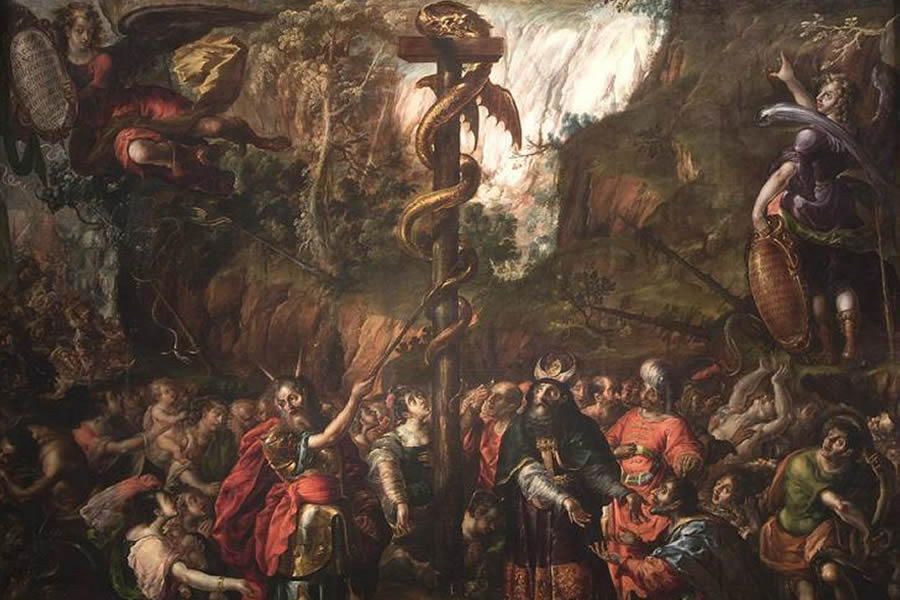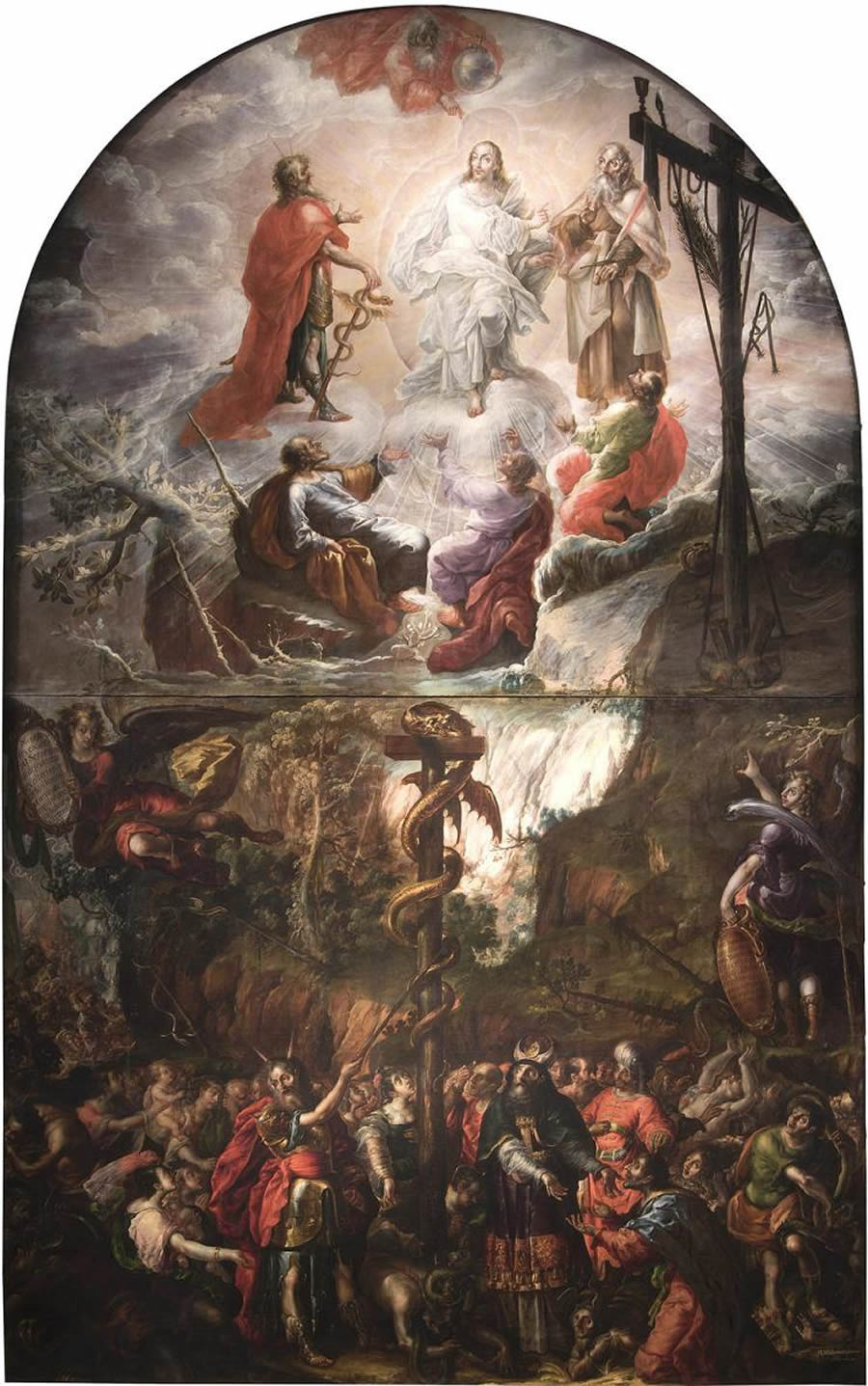
"The Transfiguration of the Lord"
by Dr. Larry Fraher, Ph.D. | 03/02/2023 | Images of FaithThere are some paintings of biblical stories that give rise to a genre. Certainly, the Transfiguration of the Lord may be considered one of these. Most will be familiar with the very famous 16th Century painting of the Transfiguration by Rafael housed at the Vatican. Rafael’s painting set the standard for the genre by presenting the painting in a diptych, the Transfiguration on top, and the story immediately after in the Gospel of Matthew on the bottom. Cristobal de Villalpando, a 17th Century Mexican Baroque painter, applied the diptych model in his presentation of Moses and the Brazen Serpent and the Transfiguration of Jesus. The immense altarpiece (28’ high) invites the viewer to understand that the covenantal relationship established with Abraham is fulfilled completely in the life, passion, death and resurrection of Jesus Christ.
The lower register of Villalpando’s altarpiece presents us with an image of the story in Numbers 21:6-9 where the descendants of Abraham, lost in the desert, had sinned, and God sent venomous serpents among them. Those bitten by the serpents were in danger of death. The people repented, asking Moses to intercede. God relented and told Moses to make a bronze serpent, place it upon a pole and lift it up. Those bitten who would gaze upon it will not die, but live. Moses is seen in the lower left-center of the painting instructing the people to look upon the serpent. He is depicted with horns because the Latin Vulgate Bible translated Moses appearance after receiving the commandments as appearing to have horns (Exodus 34). At the top of the lower register, on either side, are angels. The angels on the left holds a shield with the story from Numbers, while the other, offers the story of Christ’s crucifixion, pointing to Him- the true healer of the story in the lower register.

The upper register shows us the Transfiguration itself. Moses stands to the viewer’s left of Christ, holding a staff with a serpent, Elijah stands on the right. The three apostles, (left to right) Peter, James and John, kneel in awe and wonder at the magnificence of the vision, while a river, flowing from the cross and representing the Sacrament of Baptism rushes down between the apostles and the cross. It is a visual presentation of the New Eden. Behind Peter is the Tree of Knowledge, enlightened by Christ. Across the river is the new Tree of Life, the Cross, standing with the lance that pierced Christ’s side, and the Chalice that held the life that flowed forth from His wounds, visible on the upper arm of the cross. Above Christ, the Father instructs the apostles to listen.
This image is a wonderful call for the second week of Lent. We may not think of the transfiguration as a penitential story. However, in this image the connection to penance is clear: if we desire to celebrate and receive the fullness of life in Christ, we must gaze upon the cross, for He is the salvation of those bitten by the effects of sin. We know the hope and promise of the entire story of Salvation and the image invites us to reflect on the following questions: Where do I turn for comfort and healing in my life; to Christ or to something or someone else? Do I trust Christ to be the source of my life? Why or why not? Who are people in my life that, like the angels, point me to see Christ as the completion and fulfillment of Salvation?
BACK TO LIST BACK